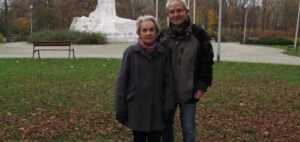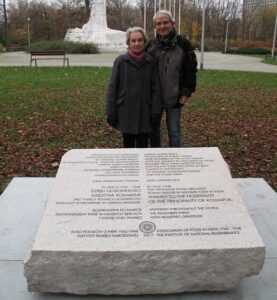
- This event has passed.
History of Valivade – Kolhapur Polish settlement camp in India, 1942 -1948
November 17, 2017

Below find – the brief history of the Polish refugees in India 1942 – 1948, in the Valivade – Kolhapur camp introduced by Mr. Andrzej Jan Chendyński, President of the Association of Poles in India 1942 – 48.
the Valivade-Kolhapur Polish settlement camp
Between 1940 and 1941 after the Soviet invasion of eastern Poland there were mass deportations of over 1 million Polish people to Siberia and Kazakhstan.
In 1942 an amnesty was negotiated.
The civilian population was initially billeted in camps in Teheran. They were transferred to Karachi and from there to countries which had agreed to take them.
In July 1943 in Valivade-Kolhapur the biggest settlement camp in India was set up, with over 5,000 children, adolescents and women. Their fathers, brothers and husbands had been murdered in Katyń, or were fighting in the War ? including in Italy at Monte Cassino, where the Maratha Light Infantry Regiment from Kolhapur also fought.
The Camp?s organisation and administration was entrusted by the authorities in Delhi to the Poles, who set up the infrastructure required for such a large community.
There was scouting ? including interaction with scouts from Kolhapur and Miraj. A church was built. There was a post office, security, a fire brigade and a cinema. Local people helped us with everything and we had daily contact with them.
The Valivade Camp had two sections: an orphanage for children and adolescents; and the so-called ?civilian area? where women with children lived independently.
Residents bought food from Indian shops and markets. They used the services of local craftsmen: shoemakers, tailors, cleaners, water porters
Indian teachers taught English in our schools. Indians helped in the hospital and clinic. Many Indians learnt enough Polish for day-to-day communication and one post office worker spoke it fluently.
In Valivade the locals made us welcome and called our camp ?Little Poland in India?.
The Maharaja Siwadzi V visited the orphanage.
After his death in 1946, scouts were present at the coronation of the new Maharaja Chatrapati.
In Valivade we found out about passive resistance – Gandhi?s philosophy of liberation which brought India her independence. We joined the Indians in celebrating 15th August 1947: Indian Independence Day.
The Indians hoped that we would be able to return to a free homeland. But Poland lost its eastern territories after the War: the part of Poland where most of us came from.
When the War ended, the inhabitants of the Camp were dispersed across the world. The last of us left India in 1948. Only about 10% returned to Poland. Many settled in England, Italy, America, Canada, South Africa and Australia.

Mr. Andrzej Jan Chendyński
